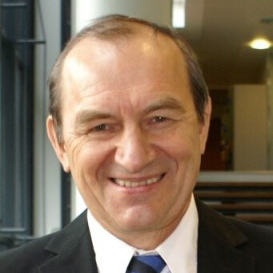Medical Imaging and Analysis
A special issue of Applied Sciences (ISSN 2076-3417). This special issue belongs to the section "Applied Biosciences and Bioengineering".
Deadline for manuscript submissions: closed (30 August 2020) | Viewed by 27421
Special Issue Editor
Special Issue Information
Dear Colleagues,
Medical imaging is an important technology in clinical applications that allows earlier diagnosis of diseases. Moreover, it helps doctors and researchers to learn more about human anatomy and physiology. This Special Issue aims to cover advances in various image modalities, such as computer tomography, magnetic resonance imaging, X-ray radiography, positron emission tomography, ultrasound imaging, imaging photoplethysmography, thermography, medical photography, multispectral imaging, elastography, and others. Contributions can be focused on conventional and unconventional image processing methods, related data analysis, and statistical tools. Review articles as well as original research articles which will bring new insights into the applied sciences of medical imaging are also welcome.
Prof. Alexei Kamshilin
Guest Editor
Manuscript Submission Information
Manuscripts should be submitted online at www.mdpi.com by registering and logging in to this website. Once you are registered, click here to go to the submission form. Manuscripts can be submitted until the deadline. All submissions that pass pre-check are peer-reviewed. Accepted papers will be published continuously in the journal (as soon as accepted) and will be listed together on the special issue website. Research articles, review articles as well as short communications are invited. For planned papers, a title and short abstract (about 100 words) can be sent to the Editorial Office for announcement on this website.
Submitted manuscripts should not have been published previously, nor be under consideration for publication elsewhere (except conference proceedings papers). All manuscripts are thoroughly refereed through a single-blind peer-review process. A guide for authors and other relevant information for submission of manuscripts is available on the Instructions for Authors page. Applied Sciences is an international peer-reviewed open access semimonthly journal published by MDPI.
Please visit the Instructions for Authors page before submitting a manuscript. The Article Processing Charge (APC) for publication in this open access journal is 2400 CHF (Swiss Francs). Submitted papers should be well formatted and use good English. Authors may use MDPI's English editing service prior to publication or during author revisions.
Keywords
- magnetic resonance imaging
- positron emission tomography
- X-ray radiography
- ultrasound imaging
- computer tomography
- imaging photoplethysmography
- thermography
- ultrasound imaging
- multispectral imaging
Benefits of Publishing in a Special Issue
- Ease of navigation: Grouping papers by topic helps scholars navigate broad scope journals more efficiently.
- Greater discoverability: Special Issues support the reach and impact of scientific research. Articles in Special Issues are more discoverable and cited more frequently.
- Expansion of research network: Special Issues facilitate connections among authors, fostering scientific collaborations.
- External promotion: Articles in Special Issues are often promoted through the journal's social media, increasing their visibility.
- e-Book format: Special Issues with more than 10 articles can be published as dedicated e-books, ensuring wide and rapid dissemination.
Further information on MDPI's Special Issue polices can be found here.





